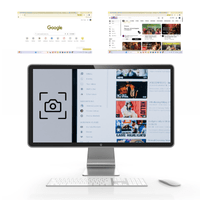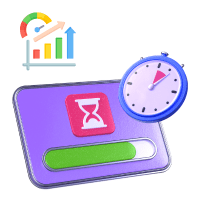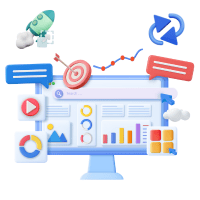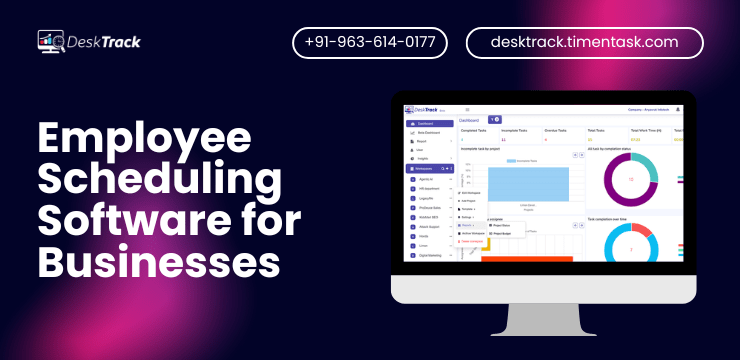
So how can you track the daily work of your employees? You can’t. However, implementing the right tools and techniques can accrue and effectively do it for you. That’s what today’s blog is all about. Today, not only will I take you through the tools and techniques to monitor staff work but also why it’s necessary, its benefits and more.
Speaking of facts, did you know that employees waste about 10 hours each week? That’s a lot. So, your goal should be to reduce this value to 0. Don’t worry, this blog has more valuable insights than teaching how to do just that. Remember that tracking employee work is necessary, and you should start doing that at the earliest.
To begin with, I will discuss the basis for tracking your employees’ daily work. I will also discuss the 5 steps to implement tools for this, the 7 ways to monitor your staff, and a lot more. So, with that out of the way, let me get started right away.
5 Basis to Track the Daily Work of Your Employees
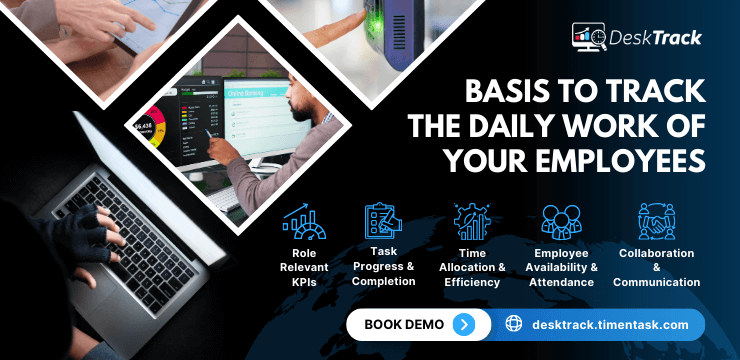
Before you can get started with staff work tracking, you also need to know on what grounds you will track projects, tasks, and other crucial work. Thus, below, I have shortlisted the essential work evaluation criteria for effective tracking.
1. Role Relevant KPIs
First, you need to set KPIs or key performance indicators based on the relevant roles of your employees and teams to track the daily work of your employees. For instance, the monthly sales growth of your sales team is used to measure its performance level against your expectations.
2. Task Progress & Completion
Another essential part of employee tracking is to track the progress on tasks and how your teams manage to complete work. Plus, you also need to analyze the work time utilisation of your employees to boost productivity.
3. Time Allocation & Efficiency
To effectively track the daily work of your employees, you also need to identify their efficiency based on the time they allocate to certain tasks and whether they can complete tasks within that time.
4. Employee Availability & Attendance
Your employees need to be available in the office first for you to be able to track employee work:
- Employee Attendance: Basically, the number of days your employees show up to your office. However, there are also other things to track here as well such as employee leaves, half-days, clocking time, total work time and more. Overall, your employees must work with focus when present. Both staff presenteeism and absenteeism are not good for productivity.
- Employee Availability: This indicates whether the employee for a particular work is available or not. This can mean that:
- Either the employee is still hired or discontinued.
- The employee is hired but unavailable due to being on leave.
Both these factors contribute to how you will track staff work and what your strategies will be.
5. Collaboration & Communication
Tracking employee communication and collaboration is a big part of how you track the daily work of your employees. Proper collaboration and communication are essential for work efficiency and coordination between staff members. Thus, it’s crucial to identify how your teams are coordinating and enhance it if required.
Read More: Top 10 Best Collaboration Software for Small Businesses
7 Ways to Track the Daily Work of Your Employees
Make your workday more productive
Time tracking and work management can help you reach your goals
faster.
So, that wraps up the basis for it. Now, let me quickly finish discussing the tools and techniques required to track employee work. With that, here are the 7 ways you can implement to be more accurate and effective in this aspect.
1. Manual Tracking Methods
Although these are outdated, a few organizations still prefer them. One of the biggest problems with manual methods to track the daily work of your employees is that they will eat up most of your time.
Plus, did I mention that they are also prone to more human inefficiencies, correcting which, again, wastes your valuable time? Moreover, here are some of the manual employee monitoring methods.
- Timesheets and activity logs
- Daily and weekly reports
- Meetings
- Email tracking
- Communication tracking
2. Computer Tracking
Staff work monitoring is useless in today’s scenario unless you track the files, URLs, and applications your employees use to work. This data helps you understand the effectiveness of the workflow and processes. Computer tracking can provide you with many useful information such as:
- The number of files, apps, and URLs your employees used for the day.
- The number of apps that were useless and useful.
- The time your employees spend on the multiple URLs, apps, and files.
This data helps you determine the work time utilization and performance levels of your staff members.
3. Call Tracking
Your employees make and receive many calls throughout the day. However, do you know how many of them are productive and the call duration? Employee call tracking is all about that. Especially for sales teams who make and receive a lot of customer calls per day.
4. Email Tracking
Email tracking is also essential to track the daily work of your employees. Data such as which employees are sending and receiving emails, recipients, senders, email conversation duration, and responses determine the efficiency.
5. Time Tracking
Time tracking software helps you more than just logging employee clocking and attendance details. The tool also has many features and functionalities to ensure accurate tracking of idle time, total work time, work time utilization, and much more. To summarize, it keeps a proper watch on where your valuable work hours go.
6. GPS Tracking
Tracking employee work through GPS tracking is the best for your on-site teams and employees. You can get various insightful details with your GPS tracking software, including:
- The routes of your employees (are they wasting time by taking a long route despite a shortcut being present?)
- The employees’ locations (are they at the right place?)
- Call details
- The time spent at the location (Did they exceed the time it would take to finish fieldwork?)
7. Project Tracking
Project tracking via project management software helps a lot in streamlining workflows and ensuring that no deadline is missed. This is due to real-time task creation, assignment, and tracking via a user-friendly interface.
5 Steps to Implement Tools to Track the Daily Work of Your Employees
Now you have a little idea of how many useful details you can get when you track the daily work of your employees. However, you also need to implement the right tools to accrue staff monitoring. So, here are the required steps.
1. Set Clear Expectations & Guidelines
First things first. If you track employee work against metrics that are beyond their skills and capabilities, then you will always get below par outcome. Also, there must be no ambiguity in your goals, expectations, and guidelines.
2. Train Your Staff
You also need to properly train your managerial staff to effectively track the daily work of your employees. Otherwise, they can misuse the tool for micromanagement or misinterpret the data from the tool to make data-driven decisions that further decrease productivity.
3. Integrate Into Daily Workflow
You also need to ensure that work tracking is integrated into your daily workflow. This way, it will become a habitual task and won’t interrupt or intervene with the work processes of your employees and teams.
4. Collect & Analyse Data
This is an important step. To track the daily work of your employees is one thing. However, if the data and insights from the tool are left unanalyzed, then it’s the same as not tracking anything. So, here’s how to properly gather and evaluate data from the staff monitoring tool you use.
- Reports & Visualizations: The first step is to view the productivity reports and visuals, such as charts. This will help you determine the number of employees that need more training, top performers, etc.
- Trends & Patterns: Identifying certain trends and patterns in the reports lets you know how effectively your teams are managing projects and tasks.
- Employee Performance: It is also essential to evaluate the performance reports of your employees. Again, too much idle time in these reports is a clear indication of lack of skills.
- Workflows & Processes: Based on the reports, you can make accurate changes to the workflows and processes if required to maintain work integrity.
- Allocate Resources Accordingly: Work time utilisation and employee performance reports also help you assign resources properly to match employee skills and improve efficiency.
5. Let Your Employees Know
It is also important to communicate the next steps with your employees to improve focus and efficiency after analyzing employee tracking reports. Constructive criticism inspires your employees to push their limits to learn new skills, and work harder to achieve goals.
Read More: Top 15 Attendance Apps for Employees in 2025
6 Benefits Achieved When You Track the Daily Work of Your Employees
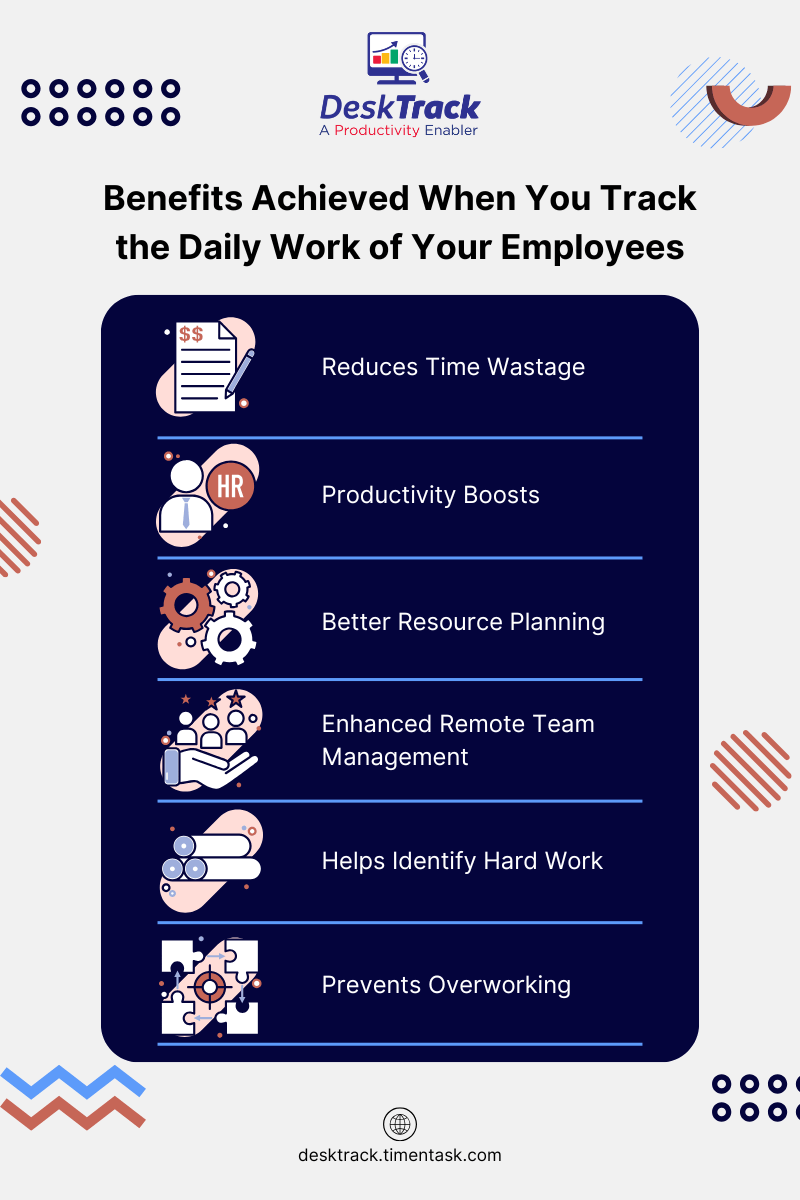
So, what benefits do you get from tracking the daily work of your employees? If your colleagues are also asking you this question, then I have the answers for you right here. Read on to find out.
1. Reduces Time Wastage
Tracking employees work daily also reduces or even eliminates time wastage. How? When you know every second spent on tasks, you will easily identify how much time is being exceeded per task. Overall, all this makes it easy for you to eliminate time-wasting activities such as too much research to reduce time wastage and improve employee efficiency.
2. Productivity Boosts
Did you know that, as per an expert report, employees stay more disciplined and work harder when they know they are being monitored via employee tracking software? Perhaps that’s the reason behind the 30-40% productivity boost within the first month of implementation. Amazing. Isn’t it?
3. Better Resource Planning
Did you know that most large projects run around 45% over budget and 7% over time? That’s a lot. However, when you track the daily work of your employees, you can easily identify the time and resources used to complete tasks. Evaluating this data helps you properly align the right people and resources with the right tasks and projects to ensure that deadlines are not missed without compromising on work quality.
4. Enhanced Remote Team Management
Tracking employee work via the right software solution is the best way to manage the work of remote teams and employees without wasting your time. The best part is that such apps work both online and offline, so you can track from anywhere. That, too, in real-time.
5. Helps Identify Hard Work
When you track the daily work of your employees, you start to notice how much everyone is dedicated to the work objectives. You will start identifying the top performers and even those who need more training and/or are pretending to work, which helps a lot in making the best informed decisions to boost work performance.
6. Prevents Overworking
Employee work tracking also helps a lot in identifying overworked and underworked employees. What it does is make it easy to balance workloads to ensure more efficiency, productivity, profitability, success, and growth.
6 Best Practices To Track the Daily Work of Your Employees

You also need to follow the best practices to effectively track the daily work of your employees. You need to remember some do’s and don’ts to ensure smooth implementation of the right tools and techniques for the same.
1. Inform Your Team
The first thing is to ensure that your teams know all about how and when you track employee work. Plus, telling your employees about the benefits of it all is a must as they only care about the “what’s in it for me” part.
2. No Employee Privacy Intrusion
Also, remember to track the daily work of your employees to improve their efficiency and productivity only. Even if it’s during work hours, the personal matters of your employees must never be tracked, as doing so is illegal and unethical.
3. Track Work to Inspire
Another point to remember is to always track employee work to inspire them to do better. Letting your staff know their efficiency levels only pushes them to keep working harder and smarter.
4. Never Threaten Employees
If you track the daily work of your employees to keep them on their toes all the time, then it is a bad thing. Even from your organization’s perspective, it will only decrease the productivity of your employees due to them working nervously.
5. View the Wider Perspective
Another “do” regarding tracking employee work is to focus more on the ultimate objective of your organization. If all your attention shifts to small milestones, then it will only waste your time.
6. No Micromanagement
Well, I never track the daily work of my employees for micromanagement. So you should not either. However, if you do want to harm employee morale and increase turnover rates, then who am I to stop you?
5 Challenges to Eliminate to Effectively Track the Daily Work of Your Employees
So, ready to implement the right employee work tracking tool in your organization? Well, according to my experience and expertise, it won’t be smooth sailing. Here’s why.
1. Employee Concerns
The first criterion to remember before you can track the daily work of your employees is employee concerns. Of course, you will face resistance from employees due to fear of privacy intrusion.
2. Data Overload
Utilizing employee tracking software can also result in data overload if the tool doesn’t have features for effective data storage and data transfer monitoring.
3. Inconsistency & Inaccuracy
Unless you use the best app to track the daily work of your employees, it will always provide you with inconsistent and inaccurate results. For example, incorrect clocking time, such as early clock out for an employee who has been working nonstop and is tasking overtime.
4. Adaption Issues
Again, unless you use the right tool for work tracking, there will be adaption issues. Especially for remote work, field teams, and multi-OS and device infrastructure.
5. Too Much Work Tracking
Another issue is that you may track the daily work of your employees beyond limits. In such a case, you can’t also stop tracking your staff altogether. Overall, both these situations will result in less responsible and accountable employees.
5 Steps to Choose the Best Software to Track the Daily Work of Your Employees

As I mentioned before, you need to choose the right tool to track employee work. However, finding it is yet another complex process. Not to worry. If you have a dedicated team, time, and resources for the same, I have simplified the process below for you.
1. Requirement Analysis
Determine the reasons behind why you need a tool to track the daily work of your employees. Also, you need to consider various other things as well such as multi-OS support, the number of employees exempt from tracking, and the working models you have implemented.
2. Feature Check
Another thing to analyze is the number of features and functionalities you require from the software for tracking employee work. For instance, do you only need to track work hours, or do you also need advanced functionalities such as screenshot tracking?
3. Shortlising
If you have done everything right so far, you must have a shortlist of the top 5 tools to track the daily work of your employees. Now, you need to cross off the tools that cost way over your budget from the list.
4. Testing the Software
Before you can finalize the best tool for work tracking, you need to also identify which software solutions will perfectly adapt to your organizational requirements. To do the same, you can:
- Ask the ones who are using the tools from your list.
- Read genuine reviews
- Get free demos and trials
5. Finalizing
Now, all that’s left for you to do is finalize and implement the best tool to track the daily work of your employees. I recommend the implementation to blend slowly with the workflow so that there are no interruptions or interventions in the schedule.
Top 5 Software to Track the Daily Work of Your Employees
Don’t have the time to look for the best software for tracking employee work? I shortlisted the top 5 options for you below. To help you make a wise choice, I included the price, overview, and user rating of each tool as well.
- DeskTrack
- DeskTime
- Time Doctor
- Insightful
- Hubstaff
1. DeskTrack
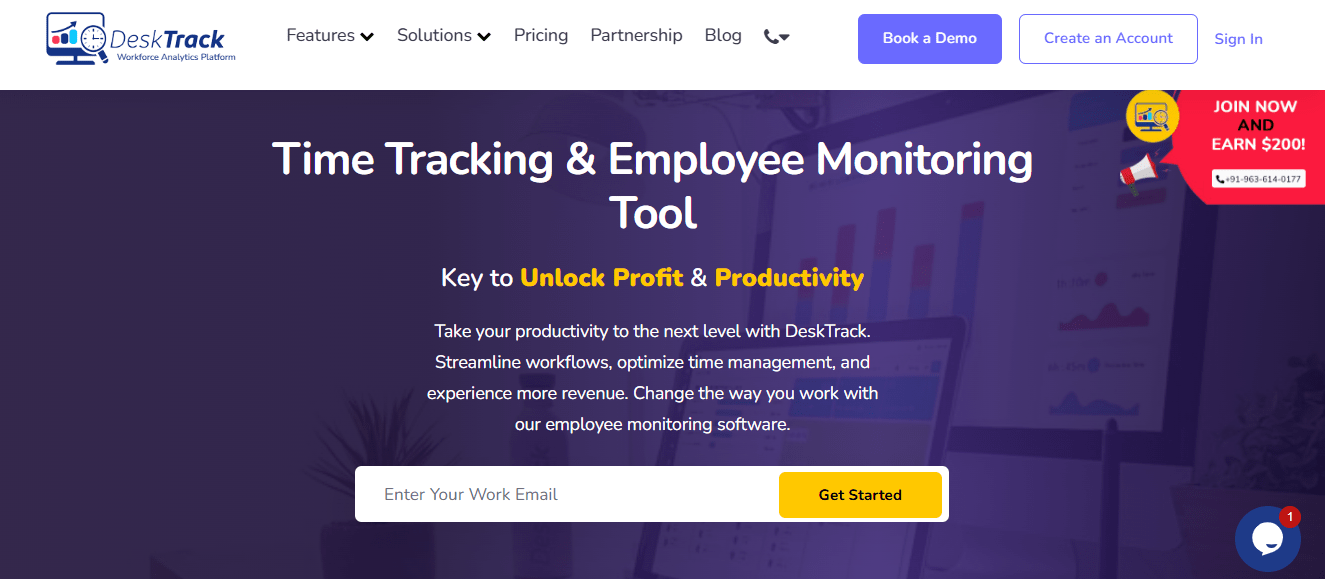
DeskTrack is the best integrated project management, employee activity tracking, time tracking, productivity monitoring, and screenshot monitoring software. I recommend using it to boost the efficiency and productivity of your in-office, field, and remote teams.
| Initial Pricing | User Rating |
| $5.99/user/month | 5/5 |
2. DeskTime
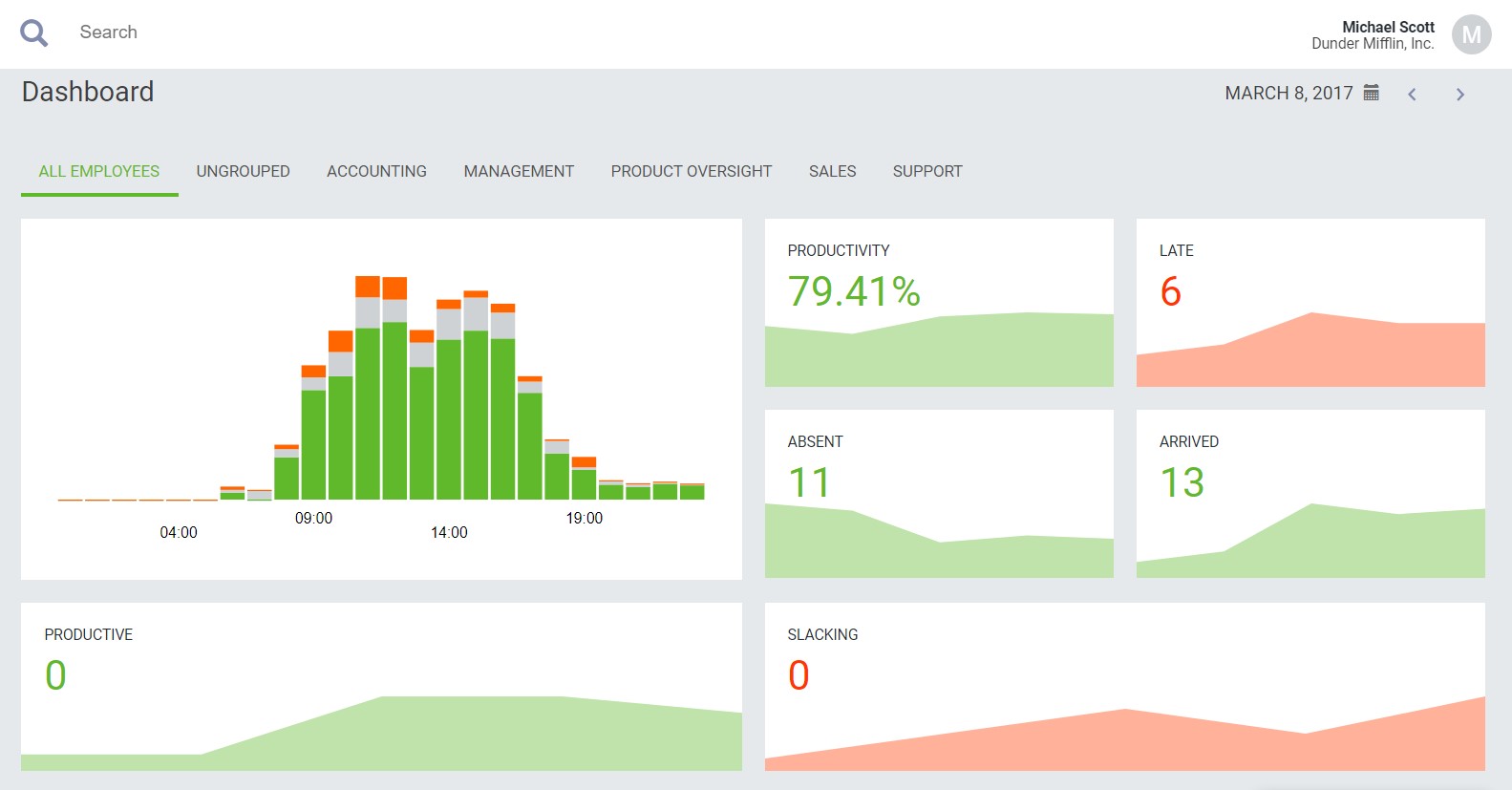
DeskTime is a powerful tool to automatically track the daily work of your employees. What I like about it is that it works in the background, never interfering with your workflow. Plus, it’s also quite cost-effective for small businesses.
| Initial Pricing | User Rating |
| $4.28/user/month | 4.6/5 |
3. Time Doctor
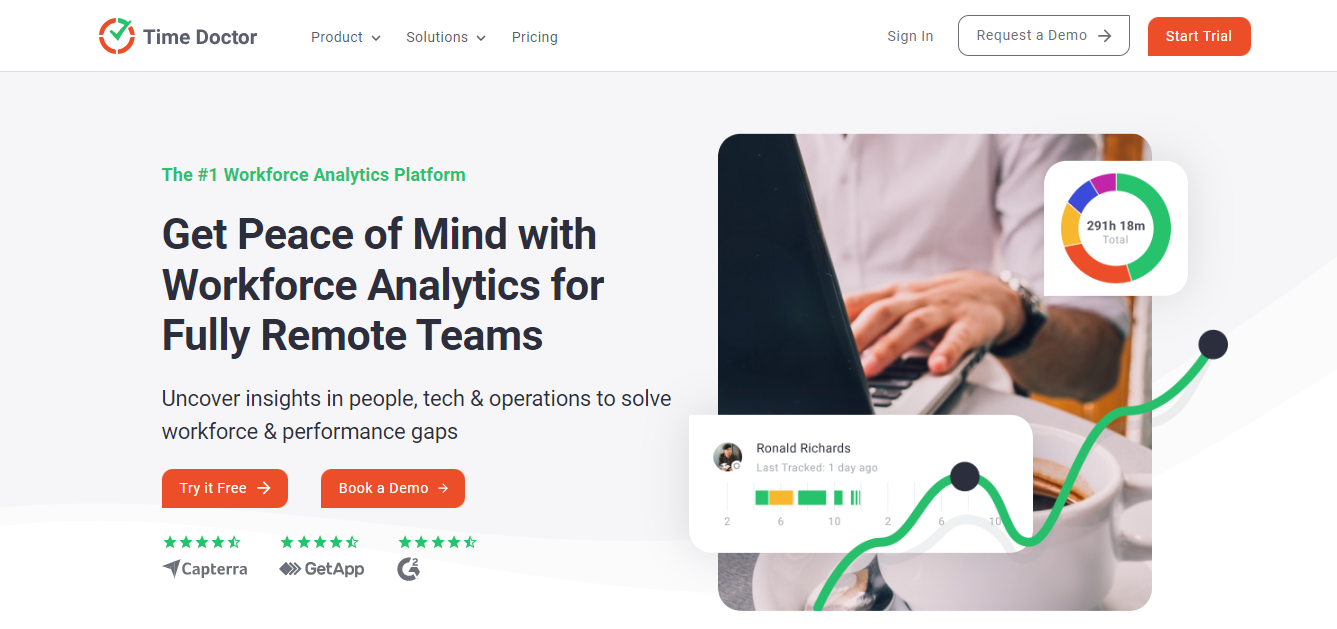
Time Doctor is one of the best software for employee tracking. What I like about it is that it’s a balanced integration of employee monitoring, time tracking, and project management software for businesses.
| Initial Pricing | User Rating |
| $6.70/user/month | 4.5/5 |
4. Insightful
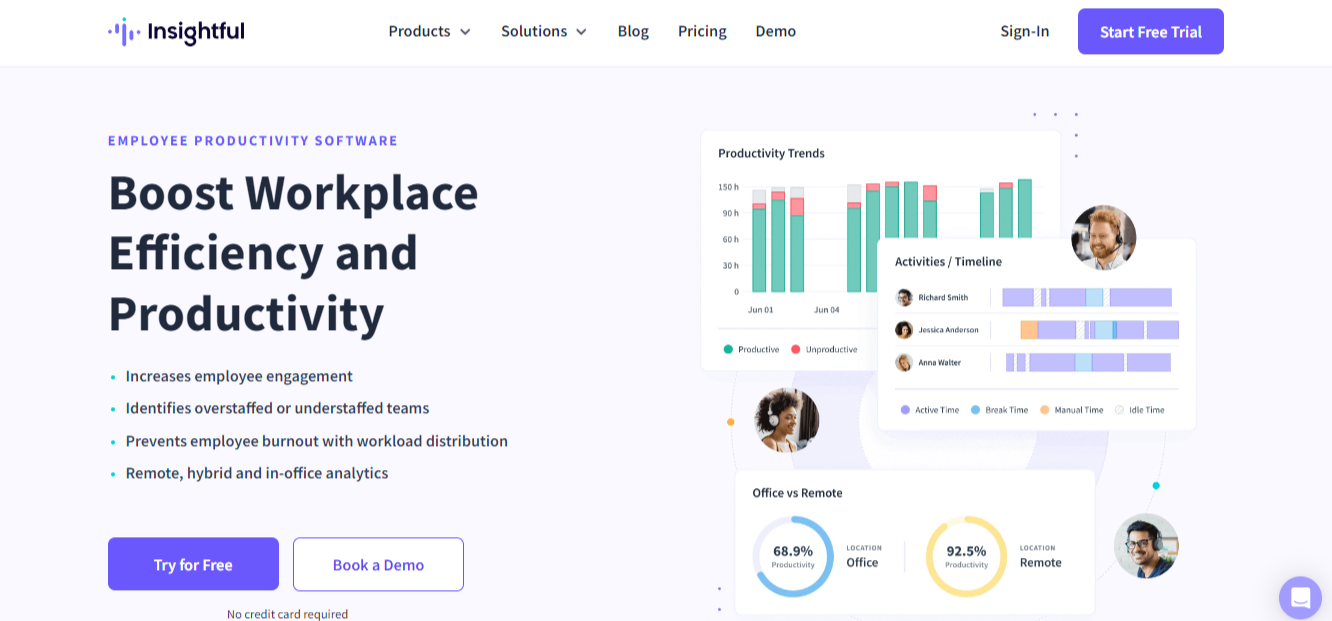
Previously known as Workpuls, Insightful is one of the perfect replacements for manual time entry systems (that is, if you are still using one of those to track the daily work time of your employees). It saves you time by automatically generating timesheets based on the tracked time and other insights.
| Initial Pricing | User Rating |
| $6.40/user/month | 4.7 |
5. Hubstaff
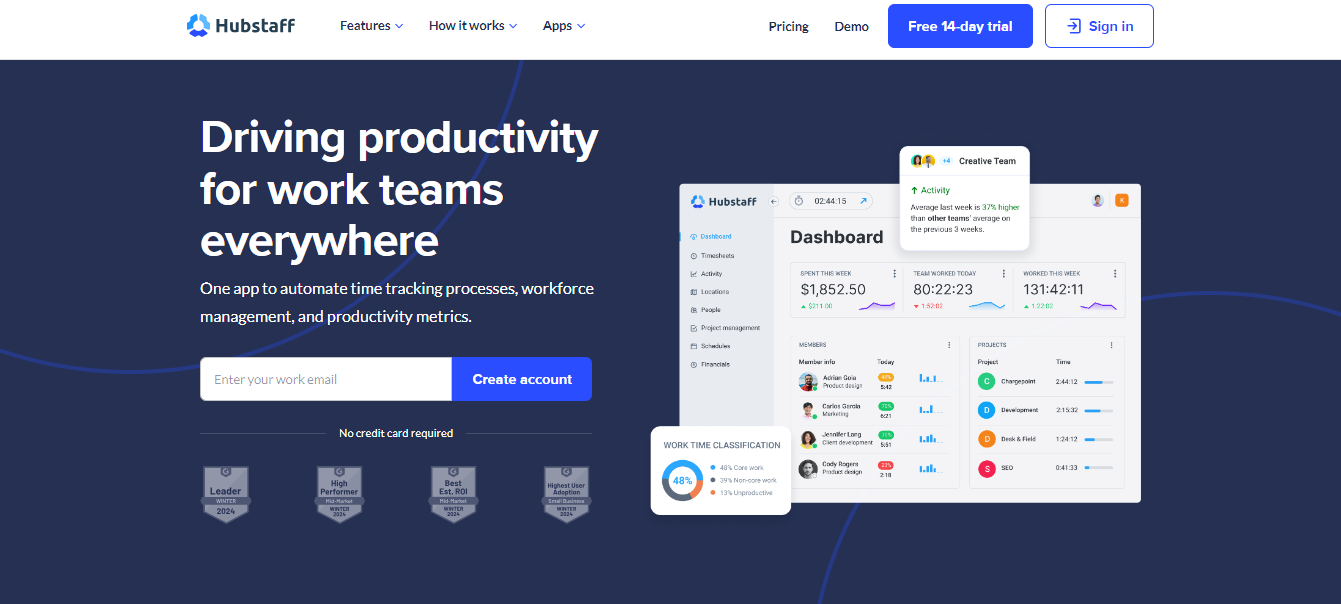
Hubstaff is an app to track employee work on my list that monitors your staff based on time and productivity. What I like about it is that it later converts all this data into accurate timesheets for evaluation.
| Initial Pricing | User Rating |
| $4.99/user/month | 4.6 |
 Conclusion
Conclusion
Now, I hope that you have wrapped your heads around how you can track the daily work of your employees in terms of time and productivity. By identifying the KPIs and various other bases, you can get an accurate estimation of how much you need to train your employees further to experience efficiency, focus, and productivity gains. As a final word, I can say that if you use the right tools and techniques to monitor your staff, you will get the most benefits such as skyrocketed employee and team productivity, more accountable and responsible employees, and reduced work time wastage.
Frequently Asked Questions (FAQ)
Q. What are the Best Ways to Track Employees?
Ans. I find these 6 ways to track employee work to be the best.
- Computer Tracking
- Call Tracking
- Email Tracking
- Time Tracking
- GPS Tracking
- Project Tracking
Q. What are the Best practices to Track the Daily Work of Your Employees?
Ans. Here are 6 best practices to follow to effectively track staff work.
- Inform Your Team
- No Employee Privacy Intrusion
- Track Work to Inspire
- Never Threaten Employees
- View the Wider Perspective
- No Micromanagement
Q. What are the Benefits of Daily Employee Work Tracking?
Ans. You will get 6 benefits from using tracking software for employees:
- Reduces Time Wastage
- Productivity Boosts
- Better Resource Planning
- Enhanced Remote Team Management
- Helps Identify Hard Work
- Prevents Overworking
Q. How to Choose the Best Software to Track Employee Work?
Ans. Here’s what you need to do to identify the best tool to monitor your employees and teams.
- Requirement Analysis
- Feature Check
- Shortlising
- Testing the Software
- Finalizing
Q. Which are the Best Software Solutions to Track Employee Work?
Ans. I shortlisted the top 5 staff trackers below.
- DeskTrack
- DeskTime
- Time Doctor
- Insightful
- Hubstaff




